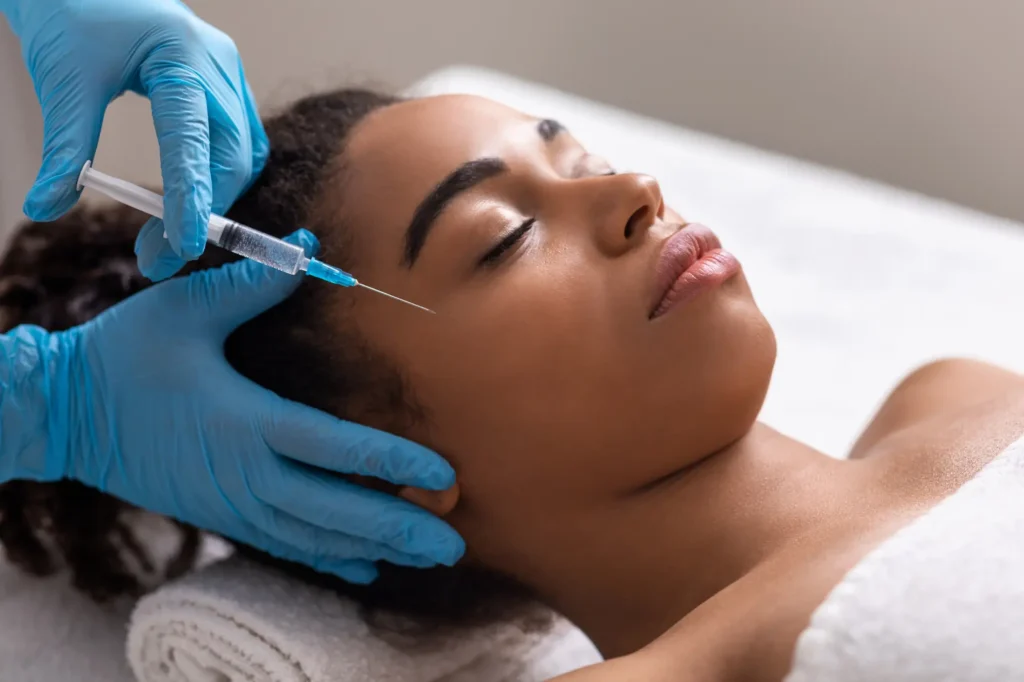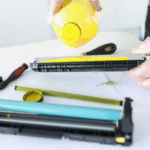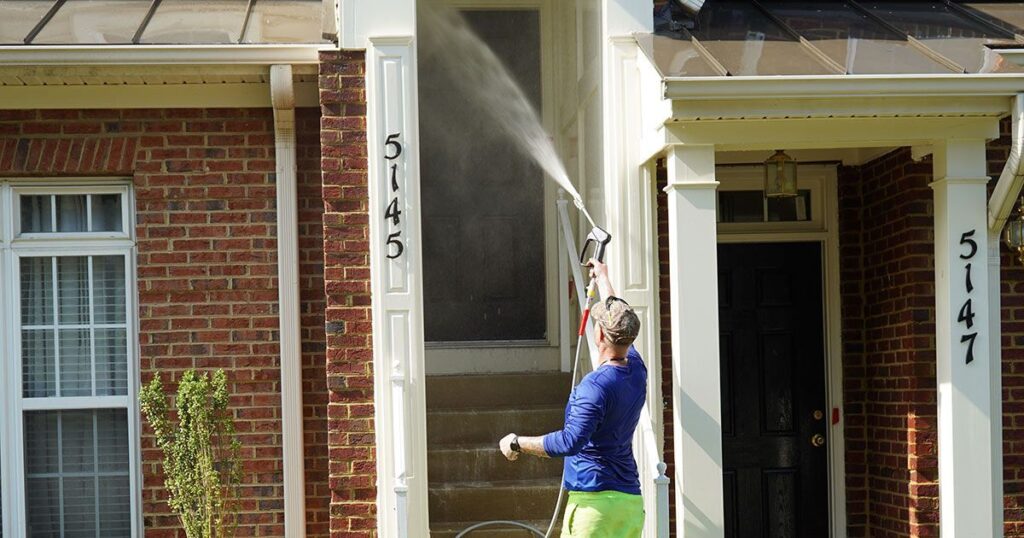Thinking about smoothing lines, boosting cheekbones, or sharpening your jawline without surgery? Dermal fillers might be your new favorite tool. In this guide, we’ll break down what dermal fillers are, the different types available, the benefits you can expect, and the aftercare tips that help you get the best (and safest) results.
What Are Dermal Fillers?
Dermal fillers are injectable gels placed beneath the skin to restore lost volume, soften creases, enhance facial contours, and improve overall symmetry. Most modern formulas are made from substances your body recognizes or can safely metabolize. Treatments are quick—often under an hour—with little to no downtime, making fillers a go-to option for people who want noticeable but natural-looking results.
Common treatment areas include:
- Cheeks and midface
- Lips and lip borders
- Nasolabial folds (smile lines) and marionette lines
- Chin and jawline
- Under-eye hollows (tear troughs) when appropriate
- Nose (non-surgical rhinoplasty) for select candidates
Types of Dermal Fillers
Not all dermal fillers are created equal. The right choice depends on your goals, facial anatomy, and the provider’s clinical judgment.
1) Hyaluronic Acid (HA)
What it is: Hyaluronic acid is a sugar molecule naturally found in skin and joints that binds water, giving skin its plump, hydrated look.
Best for: Lips, fine to moderate lines, tear troughs (in experienced hands), and general volume restoration.
Pros: Soft, versatile, and reversible with an enzyme (hyaluronidase).
Longevity: About 6–18 months, depending on the product, area, and your metabolism.
2) Calcium Hydroxylapatite (CaHA)
What it is: A mineral-like compound found in bones, formulated as microspheres in a gel.
Best for: Deeper lines, lower face support, and jawline contouring.
Pros: Provides structure and can stimulate your own collagen over time.
Longevity: Typically 9–18 months.
3) Poly-L-lactic Acid (PLLA)
What it is: A biostimulatory filler that prompts collagen production rather than providing immediate bulk.
Best for: Global facial volume loss, especially in the cheeks and temples.
Pros: Gradual, natural-looking improvement over a series of sessions.
Longevity: Results can last 2+ years after the treatment series.
4) Polymethyl Methacrylate (PMMA)
What it is: Tiny, permanent microspheres suspended in collagen gel.
Best for: Certain deeper folds and acne scarring in carefully selected patients.
Pros: Long-lasting; can offer durable structural support.
Considerations: Not easily reversible; requires an expert injector and thorough consultation.
5) Autologous Fat Transfer (Fat Grafting)
What it is: Your own fat is harvested (usually from the abdomen or thighs), processed, and re-injected.
Best for: Larger volume restoration (cheeks, temples) and when seeking very long-lasting results.
Pros: Uses your tissue; can improve skin quality.
Considerations: Involves a minor surgical step and has a longer recovery than in-office filler injections.
Key Benefits of Dermal Fillers
- Immediate (or gradual) results: HA and CaHA offer instant improvements; PLLA builds subtly over time.
- Customizable: From a whisper of lip hydration to sculpted cheekbones, dermal fillers are tailored to your face and goals.
- Minimally invasive: Quick treatments, usually minimal downtime.
- Natural-looking outcomes: In the right hands, fillers enhance—not replace—your features.
- Collagen boost (certain types): CaHA and PLLA can stimulate your body’s own collagen for longer-term benefits.
Who’s a Good Candidate?
You may be a great candidate if you’re healthy, have realistic expectations, and want to address volume loss, lines, or contour concerns without surgery. Contraindications can include pregnancy or breastfeeding, active skin infections, certain autoimmune conditions, uncontrolled allergies, or a history of severe reactions. Your provider will review your medical history to determine what’s safe for you.
Choosing the Right Provider
Dermal fillers are technique-sensitive. Seek a licensed, medically qualified injector with robust facial anatomy training—ideally someone who performs these procedures routinely and can show real, unedited before-and-afters. Don’t be shy about asking:
- Which filler type and brand they recommend—and why
- How many procedures like yours they do monthly
- What their complication management plan is (including access to hyaluronidase for HA fillers)
What to Expect: Before, During, and After
Before Your Appointment
- Consultation first: Discuss goals, budget, and timeline. Bring photos of your younger self if you’re aiming for restoration.
- Medications & supplements: If your doctor says it’s safe, you may be advised to avoid blood-thinning agents (e.g., aspirin, certain NSAIDs, fish oil, high-dose vitamin E) for about a week prior to reduce bruising. Always follow medical advice.
- Alcohol & workouts: Skip alcohol the day before and heavy workouts on the day of treatment.
- Cold sore history: Tell your provider; antiviral prophylaxis might be recommended for lip treatments.
During the Treatment
- Numbing: Topical anesthetic or nerve blocks may be used for comfort. Many dermal fillers also contain lidocaine.
- Technique: Your injector may use needles or cannulas (or both). Expect mild pressure or stinging.
- Time: 15–60 minutes, depending on areas treated.
Immediately After
- Common, temporary effects: Redness, swelling, tenderness, and bruising. Small lumps can occur and often settle as swelling subsides.
- Ice, gently: Apply a wrapped cold pack for 10–15 minutes at a time, a few times on day one to help swelling.
- Keep it clean: If lips were treated, avoid lipstick or makeup around the area for 12–24 hours unless your provider says otherwise.
Aftercare Tips for the Best Results
- Avoid heat and strenuous activity for 24–48 hours. Heavy workouts, saunas, hot yoga, and tanning can worsen swelling and bruising.
- Sleep smart. Prop your head up the first night. Try not to sleep on your face if cheeks or lips were treated.
- Hands off. Do not massage or manipulate the area unless your injector specifically instructs you to.
- Hydrate and baby your skin. Drink water, use a gentle cleanser, and moisturize. HA fillers especially love hydration.
- Skip alcohol for the first day. It can increase swelling and bruising.
- Delay facials and skin treatments. Hold off on massage, microneedling, lasers, or peels for 1–2 weeks (or as directed).
- Watch for anything unusual. Significant pain, mottled/whitish skin, vision changes, or symptoms that seem out of proportion are not normal. Contact your provider immediately or seek urgent care.
How Long Do Results Last?
Longevity depends on filler type, treatment area, and personal factors like metabolism and lifestyle. As a rule of thumb:
- Lips (HA): ~6–12 months
- Cheeks & midface (HA or CaHA): ~9–18 months
- Jawline & chin (denser fillers): ~12–24 months
- Biostimulatory fillers (PLLA): improvements can last 2+ years after a series
Plan on maintenance visits before the product fully fades. Many patients prefer small “top-up” appointments for consistently natural results.
Safety and Possible Side Effects
Most side effects are mild and short-lived—think swelling, bruising, and tenderness. Less common risks include prolonged swelling, nodules, asymmetry, or vascular complications (when filler enters or compresses a blood vessel). These events are rare but serious. Choosing an experienced provider and following aftercare instructions help minimize risk. With HA dermal fillers, hyaluronidase can be used to dissolve product if needed.
Dermal Fillers vs. Neuromodulators
Quick clarification: dermal fillers add volume or support, while neuromodulators (like Botox) relax muscles to soften dynamic wrinkles (those that appear with expression). Many people combine both for comprehensive rejuvenation—think filler for cheeks and a neuromodulator for forehead lines.
Myths, Debunked
- “Fillers always look fake.” Overfilling looks fake. Conservative, strategic placement looks fresh and rested.
- “Once you start, you can’t stop.” If you pause treatments, volume gradually returns to baseline. There’s no rebound “collapse.”
- “All fillers are the same.” Formulas, densities, and behaviors vary widely. Matching the filler to the job is key.
Cost and Value
Pricing varies by product, area, and injector expertise, usually charged per syringe or per treatment area. While it’s tempting to bargain-hunt, remember: you’re paying for skill, safety, and results. A seasoned injector may use less product more precisely, which can be more cost-effective long term.
The Bottom Line
Dermal fillers are a versatile, minimally invasive way to restore volume, balance features, and refresh your look—with results ranging from subtle hydration to high-definition contour. The best outcomes come from a thoughtful plan, an experienced provider, and consistent aftercare.
Quick Recap
- Types: HA (reversible, versatile), CaHA (structure + collagen), PLLA (collagen stimulator), PMMA (long-lasting support), Fat (your own tissue).
- Benefits: Customizable, minimally invasive, immediate or gradual results.
- Aftercare: Ice gently, avoid heat/exercise 24–48 hours, don’t massage unless told, hydrate, and watch for unusual symptoms.
- Safety: Choose a qualified provider; know the signs that need urgent attention.
If you’re considering dermal fillers, book a consultation to discuss your goals and options. A personalized approach—plus smart aftercare—goes a long way toward results you’ll love.
This article is for educational purposes and isn’t a substitute for medical advice. Always consult a qualified healthcare professional for individualized recommendations.




